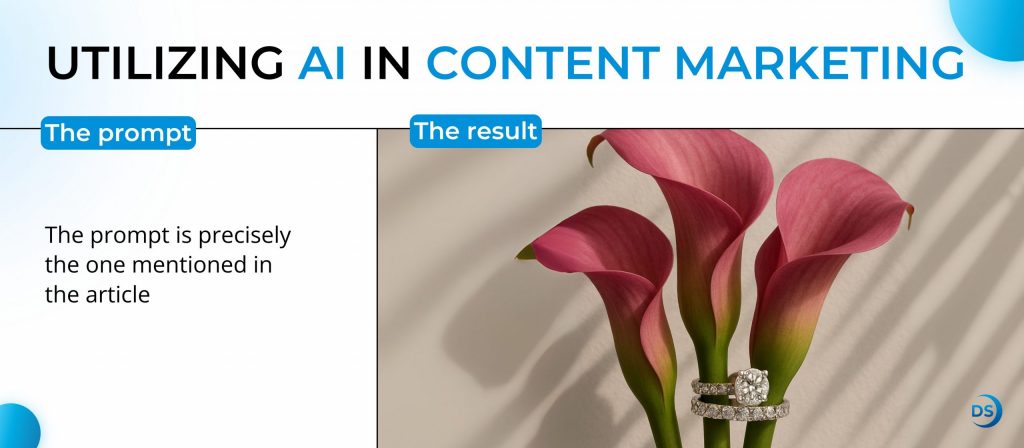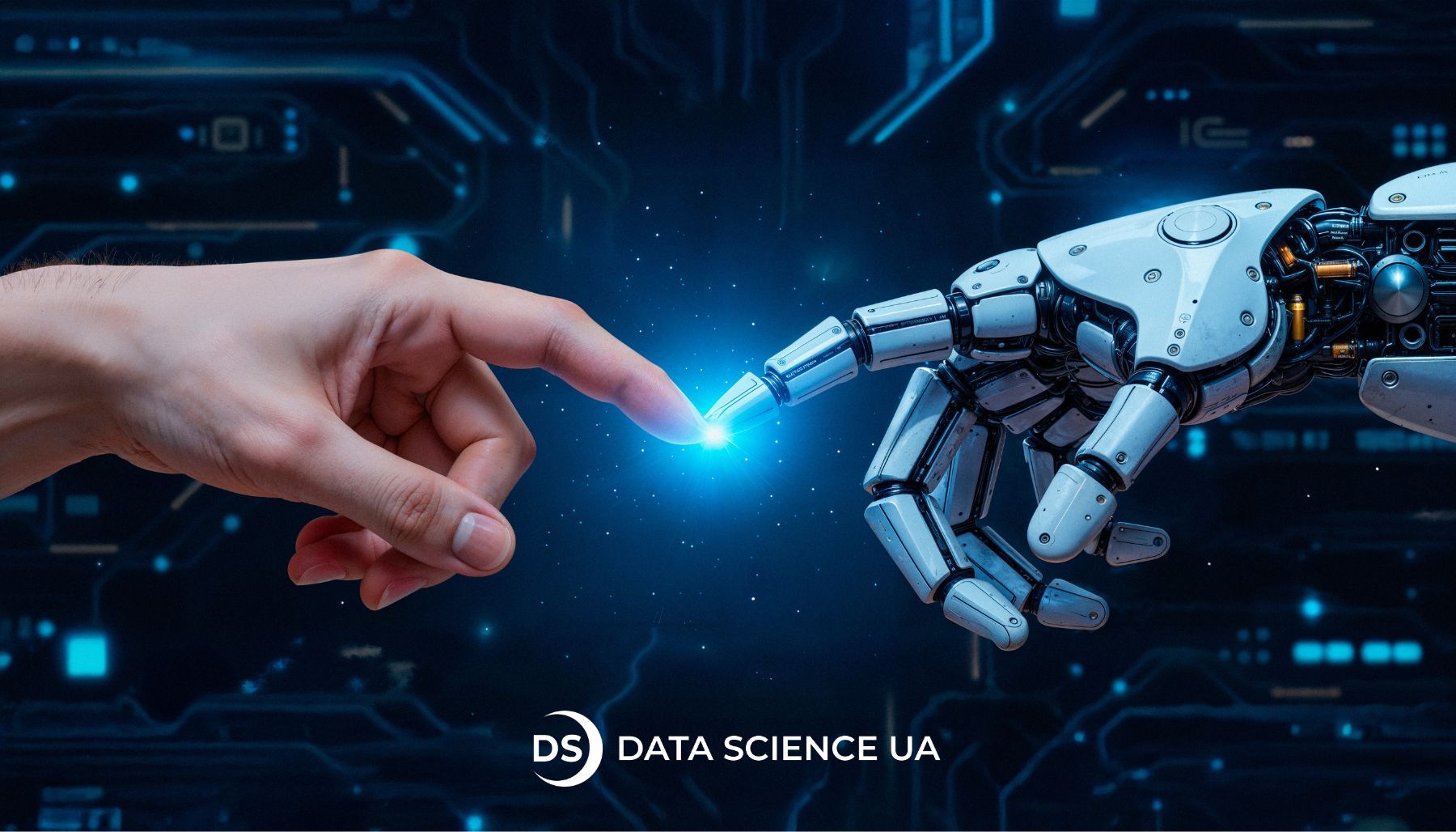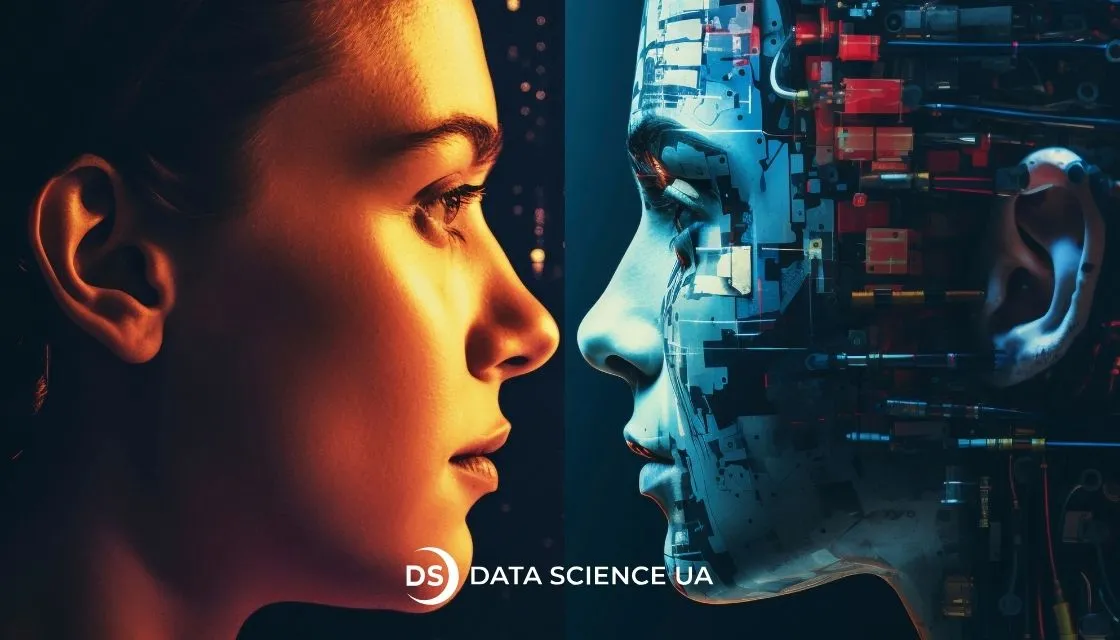ChatGPT for content marketing: 6 best practices
How ChatGPT is changing the game
3 AM, deadline tomorrow, and your creative battery is dead. Sound familiar? Although that’s the past. We introduce you to ChatGPT content marketing, a generative AI that helps marketers come up with new ideas, write texts, optimize, and manage content in volume. Basically, ChatGPT helps write blog posts, provides SEO-optimized title suggestions, personalizes campaigns, and much more, but about it we’ll talk later.
Does ChatGPT create materials out of nothing?
No, it was trained on huge data sets from the internet. It creates new, unique content, but only based on existing information. That’s why ChatGPT writes in many tones and styles, answers questions, and provides helpful suggestions. Its versatility makes this tool invaluable for today’s content marketers.

Typical working day of a ChatGPT content marketing specialist, full of ideas and challenges.
How to use ChatGPT for content marketing success?
Content idea generation
Marketers’ first challenge is to develop relevant and engaging content ideas. Сontent marketing ChatGPT excels at ideation. You can work with him as a colleague in a brainstorming session: discuss ideas, criticize proposals, ask for revisions and clarification, which turns the process of finding concepts into an active live session, where every subsequent draft of the text is more accurate and relevant.
Also, ChatGPT is able to research competitors’ blogs and market trends in order to propose ideas that are pertinent to the needs of the market at the moment. This makes content strategies competitive and dynamic.
For instance, employing Google Trends or SEMrush together with ChatGPT opens up possibilities for seasonality, niche targeting, as well as competitor gaps.
SEO optimization with ChatGPT
Aside from ideation, ChatGPT for content marketing also assists in in-line optimization. Content marketers can ask ChatGPT to suggest:
- Keyword placements
- Meta descriptions
- Internal linking structures
- Semantic keyword variations
It enables faster on-page SEO execution without sacrificing readability and content integrity. This is a great option for those who don’t have a budget for SEO, but of course, a highly skilled specialist cannot be replaced by ChatGPT without additional help. ChatGPT can also structure content according to schema markup guidelines and suggest FAQ sections to improve snippet visibility.
Additionally, ChatGPT can review existing content and suggest revisions in accordance with Google’s Helpful Content Update principles. These entail enhancing clarity, content substance, and congruence with user intent.
Effective writing of title tags and H1 headers
Strong title tags and H1 headings drive up click-through and improve search rankings; don’t you, marketers, know about it? Сhat gpt content marketing is capable of generating several headline choices with readability and keyword optimization. As an illustration, a prompt like “Generate SEO titles for a blog on AI in retail” will generate thought-provoking, organized choices that conform to best practices.
Headline options can also be ordered in varying tones – professional, playful, technical to suit the brand voice and target audience. ChatGPT helps with A/B testing titles by offering variations of varying sets of keywords and appeals.
Blog post writing and editing
Have you ever been in a situation where you have to write a 1,000-word article and you have no inspiration? Take your knowledge and turn it into a prompt, and the rest will be done by AI for you. Although the general “Write a 1000-word blog on AI in education” will also work.
Chat GPT for content marketing provides structured outputs like:
- Hooks and introductions
- Subheadings
- Supporting facts (though users need to fact-check)
- Summaries and CTAs
For published blogs, ChatGPT helps update outdated sections, adjust tone, and optimize SEO elements. This makes editorial processes easier and allows content repurposing at scale.
Social media content generation
Social media lives on a brand’s vivid “character”. Here, content marketing with ChatGPT is able to close tasks in several formats at once.
1. Text generation
ChatGPT helps create posts for X (Twitter), Threads, LinkedIn, and other platforms. You write a request in the chat, for example: “Come up with a post announcement about our new event”, and it will offer its post options. You can give it a brand tone guide so that the texts sound as if they were written by a person from your team. You can say: “Too formal, make it simpler” or “Add a joke”. It rewrites. Moreover, ChatGPT can analyze engagement metrics: where to shorten the text, where to strengthen the call-to-action, and how to adapt messages for different audience segments.
2. Image generation
Using generative models like DALL·E or MidJourney, you can create unique images for Instagram or Facebook. The logic is similar, but you describe the image in words: “Make a cover for a financial article in a minimalist style: white background, abstract lines, emphasis on numbers”. The model generates several images. You can clarify: “Make the colors warmer” or “Remove unnecessary elements”. The result is the effect of “working with a designer”, where you edit the visual until the final version.
To understand more, you can use our ready-made prompt:
“Imagine you are a photographer. Generate a close-up studio photo of a single pink calla lily flower with a pair of luxurious diamond rings on its green stem, white background, soft natural lighting, high-end jewelry advertisement, ultra-realistic, macro photography style, high detail, minimalistic composition, style photographic, camera: Nikon D850, shallow depth of field –ar 4:5 –style raw –v. 6, background with shadows”. The result will be seen further.
3. Video generation
In the video, the generation is more often through the script and visual cues. You ask: “Make a 30-second social media video about the new game”. AI first writes the script: scenes, voiceover, key images. Then you can assemble a video from these descriptions in a generator (for example, Runway, Pika, or Synthesia). And again: you comment, the model rewrites the script or adds emotions.
Email marketing campaigns
Email is still a high-ROI medium, but only if messages strike a chord. ChatGPT can author:
- Subject lines designed for open rates
- Personalized body copy
- Newsletter teasers
- A/B test copies
- Optimizing marketing funnels
With prior campaign history and customer personas, ChatGPT refines email tone, length, and CTA format for greater conversion.
In applications such as Mailchimp or ActiveCampaign, marketers are able to test ChatGPT-generated email variations to enhance open and click-through rates. ChatGPT can also guide sequence flows and provide segmentation strategies.

The result of the prompt for MidJourney mentioned earlier.
Is ChatGPT worth it?
Here is how such fears can be eliminated:
- Concern: Will ChatGPT replace our human writers?
Answer: No. ChatGPT is more accurately thought of as an assistant. It saves time on drafts, outlines, and optimization work, enabling human writers to focus on creativity, voice, and strategy. - Concern: Is the content of a quality acceptable to our brand?
Answer: Appropriate prompting and editing by ChatGPT produce content equal to agency standards. Custom instruction and tone-of-voice libraries ensure brand consistency. If you’re unsure about your skills, come to us for corporate AI education. - Concern: What if what is said is not actually true?
Answer: Like with any tool, ChatGPT can be paired with a process of fact-checking. It is a solid co-pilot under human monitoring, not a risk.
Stat: Based on a survey conducted by Content Marketing Institute in 2024, 58% of AI tool users like ChatGPT report that they have seen their content creation time drop by 30% without any reduction in engagement or quality.
Challenges and limitations of using ChatGPT
While a versatile content-generating tool, ChatGPT has its limitations. Those marketing with AI-generated content must be aware of the following limitations.
Limited contextual understanding
While ChatGPT does well with a short prompt or remains coherent within a few paragraphs, it fails to do so for maintaining context within longer, more complex documents. This will lead to:
- Repetitive ideas across sections
- Misinterpretation of prior content
- Failure to connect ideas or arguments logically in the long term
Example: When creating a lengthy piece on sustainability in fashion, ChatGPT can fail to reference an already-explored brand case study in the latter half of the article.
Tip: Utilize structured prompts and keep inputs modular. When creating text from several sections, it’s better to add them one at a time with a context’s clarification.
Incorrect or stale information
Although ChatGPT can already access the internet and verify facts in real-time, it’s important to understand the limitations:
- Not everything is checked automatically. The model can combine pre-trained data and fresh sources, but it doesn’t always access them unless a check is explicitly requested.
- The risk of errors remains. Even when using the internet, ChatGPT can provide incomplete data, incorrectly interpret sources, or fail to consider context.
- Dates and trends. Without a user’s request for clarification, ChatGPT may rely on outdated information from the training dataset.
Example: if the year is not specified, the model may use forecasts “for 2023” and present them as relevant for 2025.
Tip: Always verify key data, statistics, or brand references with trusted external sources. Never rely on ChatGPT alone for fact-based content.
Lack of emotional intelligence
While ChatGPT can mimic tone and sentiment, it lacks real emotional intelligence or real-world experience. So:
- Empathy in messages may ring hollow or contrived
- Content aimed at emotionally vulnerable audiences (e.g., bereavement services, mental health) may lack
- It can resort to a neutral or generic tone on emotionally charged topics
Example: A campaign email to reply to layoffs would be tone-deaf if written by ChatGPT alone (until you brief the tool).
Tip: Allow AI to write, but always keep human empathy and context when checking on emotionally charged content.
Challenge with specialized or technical topics
Though ChatGPT may provide summaries, it tends to:
- Generalize complex topics
- Misuse of technical jargon or terminology
- Over-simplify intricate concepts
Example: In scientific, legal, or financial writing, it may be confusing jargon or omit vital distinctions.
Tip: Have ChatGPT-generated writing peer-reviewed with subject matter experts. Use it for outlines or organization, rather than as a final source.
Poor source attribution and citation
ChatGPT, by default, does not cite sources unless instructed otherwise. Even when instructed, citations may:
- Be incomplete or fabricated (e.g., nonexistent research studies or broken URLs)
- Fail academic or journalistic standards
- Mix credible and non-credible sources
Example: A draft white paper may look solid and convincing, but it can be a trap: for example, a link to a supposed article from the Harvard Business Review that doesn’t actually exist. If you didn’t recheck the sources, this “fake authority” can easily slip into the final version and undermine the credibility of the material.
Tip: If accuracy is crucial in your line of work, verify sources by yourself! For professional or academic use, verify citations and add references manually.
Risk of producing illogical or inconsistent material
ChatGPT may produce material that is:
- Grammatically correct but logically flawed
- Inconsistent within the same paragraph
- Replete with fluff or redundancy
Example: An article can state “AI enhances productivity” and later contradict itself by stating “AI reduces productivity owing to complexity”.
Tip: Human editing must always be employed to check logic, coherence, and fact consistency. Outline-based prompting must be used to reduce contradictions.
See how Data Science UA can help you with AI adoption!
Is it better to use ChatGPT now?
If ChatGPT and content marketing are properly used, they allow leaner content teams, better ROI, and uniform messaging across platforms.
But AI is not substituting human imagination or critical thinking. The most powerful content strategies harness ChatGPT’s power of automation with human oversight, brand expertise, and ethical storytelling.
In the age of information overload, ChatGPT gives marketers an edge if utilized for a cause. Learn more about AI development services that help integrate ChatGPT and other AI technology with your business processes.
FAQ
What are the greatest benefits of utilizing ChatGPT for content plans?
ChatGPT is a time-saving, SEO-friendly integration, campaign personalization and idea generation. ChatGPT optimizes content production with quality ensured.
How does ChatGPT help in content personalization for the audience?
With target audiences, past behavior data, or tone choices, marketers can direct ChatGPT to personalize copy to specific audience segments on email, blogs, and social media.
What are some of the pitfalls in using ChatGPT for content marketing?
Some of the key issues include incorrect facts, superficial comprehension of multidimensional concepts, a lack of good emotional intelligence, and a lack of references, from which it doesn’t know what you need. Marketers must support machine-generated content with human inspection and quality checks and be very precise in task formulation.






